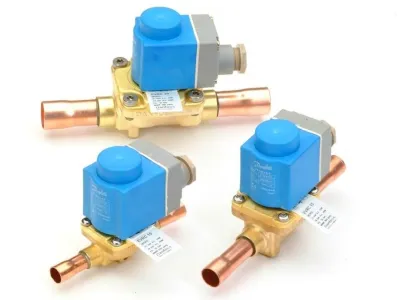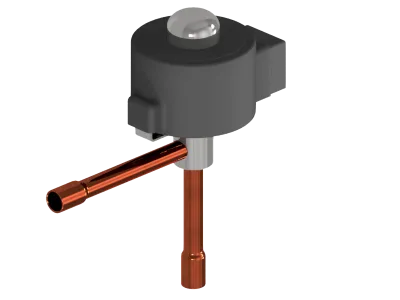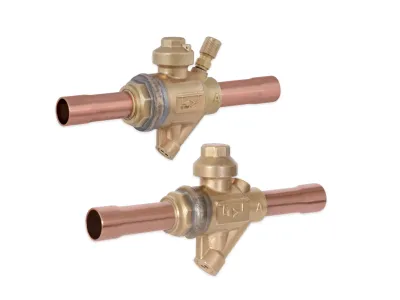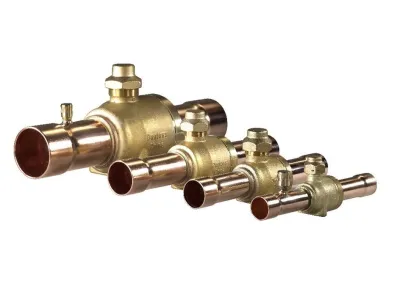Explanation for installation, minimum pressure drop MOPD, servo and direct controlled solenoid valves etc.
Applications
Solenoid valves for refrigeration systems

Construction
How is such a solenoid valve constructed? In general, a solenoid valve consists of a coil and a valve housing. The coil is mounted on an armature tube. In smaller, direct-acting valves, the moving armature opens and closes the valve by directly releasing or closing the valve seat. In order to achieve better internal tightness, the
Contents
Product Ad
Image

EVR (NC) is normally closed / (NO) normally open, directly operated or servo-controlled solenoid valve
Jobs
Mounting
Mechanic/Welder (m/f/d) at GEA
We are looking for three mechanics/welders (m/f/d) at our Berlin location.
Image

GEA Refrigeration Germany GmbH
Berlin, Germany
Fulltime
Project management refrigeration technology
Commercial Employee Order Processing in Engineering (m/f/d)
To strengthen our team, we are looking for a commercial employee to handle engineering projects as soon as possible.
Image

MTA Deutschland GmbH
Nettetal, Germany
Fitter refrigeration technology
MTA Refrigeration Technician (m/f/d) in Customer Service for Baden-Württemberg
To strengthen our team for the Stuttgart region, we are looking for you as a Refrigeration Technician (m/f/d) for our customer service.
Image

MTA Deutschland GmbH
Nettetal, Germany
Fulltime
Get in Touch with the Author
If you have any questions or would like additional information, the author of this article is happy to assist you. Simply use the options below to get in touch directly.
Related Products
Image

EVR (NC) is normally closed / (NO) normally open, directly operated or servo-controlled solenoid valve
Image

T 2 / TE 2, flare / solder thermostatic element / valve housing
Image

The CEV step motor expansion valve provides precise flow control for virtually every refrigeration, air- conditioning, and heat pump application
Image

This compact solution eliminates the check valve and associated brazing involved
Image

GBC ball shut-off valves are manual shut-off valves that can be used in both flow directions.
Related Articles
Enhancing Defrosting Efficiency in Cold Storage Facilities
Optimizing Cooling Operations and Saving Energy During Defrosting with Mechanical Solutions
12°C – Hot Gas Defrosting for Evaporators
Efficient Defrosting in Industrial Freezer Warehouses
Efficient Cooling for Data Centers
Innovative solutions for optimizing server cooling. Learn more and reduce energy costs.
How do you calculate the cooling capacity?
The cooling capacity is calculated by changing the energy transferred in the cooling process.
MIXING HEAT TRANSFER MEDIA WITH WATER
In general, no two different heat transfer media may be mixed with each other. Only when mixing with water can full frost and corrosion protection still be guaranteed.
Refrigeration optimization and production planning according to electricity spot price
Use AI to optimize refrigeration, reduce electricity consumption by continuously calculating system mass and energy balance to control set points.
Controlled Atmosphere Storage
The market price for fruit and vegetables is primarily determined by quality, supply and demand. But how do you maintain the best quality in your products until the most suitable moment? Simple: by opting for storage under Controlled Atmosphere (CA) conditions.

